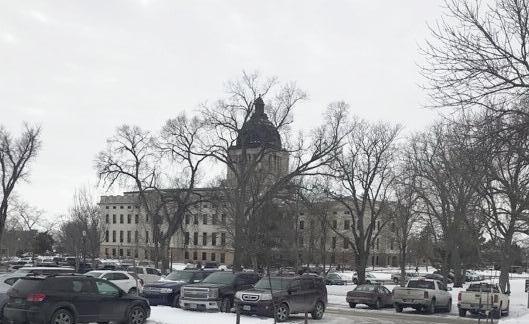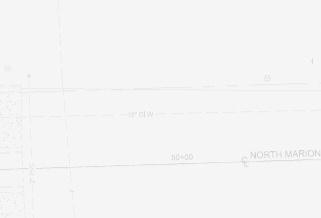
3 minute read
SDMEAHometown Power

By Chris Hill, SDMEA Director of Municipal Electric Services
Advertisement
MUNICIPAL ELECTRIC UTILITIES
AsIamattheCapitolduringlegislativesession,Ithinkto myself, what do I want the SDMEA member municipalities and the people that live in those communities to know about their Municipal Electric Services?What do I need to be searching for to make sure thattheirElectricUtilitiesarenotinanyjeopardyofbeing restricted or challenged by any bills that may be brought forward? I immediately think of our municipalities and think that maybe we need to educate our citizens on what they need to know about our services.

South Dakota State Capitol Building
For some who are reading this, it may just be boring. For others, it may be a refresher. For a few, you could even stop reading now as this edition of Hometown Power isn’t for those of us who already know about the benefits of Municipal Electric Systems, or Municipal Utilities. This editionandtheinformationwithinissomethingthatshould bepassedontoyourcommunitymemberswhoareunclear of the excellent services thatYOU provide to them.
First, in South Dakota, we have three types of electrical utilities that provide electric services to our citizens. 35 Municipalitieshavetheirownelectricutilities. Therearealso 28RuralElectricCooperatives,and6Investor-ownedutilities. I am just going to hit the main points of Municipal Electric Utilities. Municipalutilitieshaveseveralbenefits,butfirstand foremost,itistoprovidereliablepowerataffordablecoststo citizens. Most of the Muni Electrics in South Dakota have a Western Area Power Administration (WAPA) allocation, which is a set amount of power that they provide to the Municipal Utility. WAPA is one of four Power Marketing AdministrationswithintheU.S.DepartmentofEnergy. Their allocations are set, and the Municipality must also purchase supplemental power from other power providers. The two main supplemental power providers used in South Dakota Municipalities are Heartland Consumers Power District, and MissouriRiverEnergyServices.
Nowthatweknowwherewepurchaseourpowerfrom,we must ask, why Municipal Electric? Well, the short answer isthatMunicipalElectricUtilitiesareownedandoperated by the citizens of the community. The Municipal Utility reports to and is responsible to the citizens of that community. The citizens have ultimate control over every aspect and that ownership of the utility by the citizens allows the citizens to decide on improvements to the system and set the electrical rates.

How do we get our power? Three steps get power to your home or business.
1. Generation. Electric Power is typically generated through coal, natural gas, hydro, nuclear,solar,andwindfacilities. Alargeportion is generated right here in South Dakota. About 45% of our power is generated through hydro plants along the Missouri river. WAPA markets and transmits the Federal electric power generated by the hydropower facilities at Gavins
Point, Ft. Randall, Big Bend, Oahe, Garrison, Ft.
Peck, Yellowtail, and Canyon Ferry Dams. As statedpreviously,WAPA’sallocationonlymeetsa set amount of power needed, so supplemental power must be purchased. 2. Transmission. Once the power has been generated,itmustbetransferredtothecity. This is done through large transmission lines and substations. These lines and substations are operatedaspartofanIntegratedSystem. Mostof the South Dakota Municipalities do not have direct connections to the Federal System and wouldhavetopaywheelingagreementstogetthe power from the Integrated System to the Municipal Electrical System.
ninE g gnieer soituos l n enis c .619 9


Municipal Engineering
Land Sur ev ying
Drainage and Erosion oC n r trol
Co onstr cu tion Administrati n on

Located in Sioux Falls, South Dakota
www.sayreassociates.com (605) 332-7211 3. Distribution. Distribution is the point from the
Municipal Electric system to a citizen’s house.
This process can be done in either overhead (visible power lines overhead), underground (buried), or both. An overhead system typically consists of traditional poles with transformers mountedatthetopandlinesrunningfrompoleto pole. Your community may be in the process of burying your older lines and may use underground for newer developments. The benefits of underground included aesthetically pleasing (no overhead lines), and fewer weather related outages. However, underground systems usually cost more than a traditional overhead system.
Those are the basics of Municipal Electric Utilities. Affordable,reliablepowerthroughoutyourmunicipalityis very important to your community and your citizens. Pleasefeelfreetoshareanyinformationwiththepublicas your citizens should know the benefits of Municipal Electric Utilities. There are several other benefits not mentioned, so try to inform your community and keep up the good work!
On a side note, WAPA CEO and Administrator Mark A. Gabriel will be speaking at the SDMEA Superintendent/Foreman Conference on Wednesday, March 7th at 9:30AM. I strongly encourage all electrical personnel to attend as well as any Mayors or Council members who would like to hear Mark give his presentation. However, lunch will only be available to those who have preregistered.

Senate Chamber
Questions? Comments? Call 605-770-6299 or email me at Chris@sdmunicipalleague.org.










